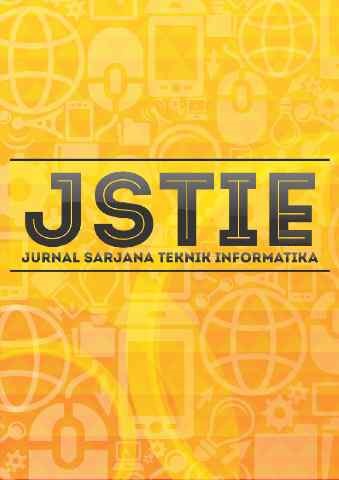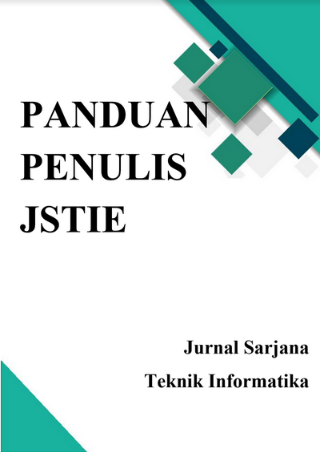Protokol L2TP dan IPsec Sebagai Keamanan Jaringan Pada Dinas Kominfotik Sumatera Barat
DOI:
https://doi.org/10.12928/jstie.v10i3.25178Keywords:
Virtual Private Network (VPN), Layer 2 Tunneling Protocol (L2TP), IP Security (IPSec), MikroTikAbstract
Beberapa masalah muncul pada beberapa perusahaan-perusahaan baik itu dalam skala besar maupun skala kecil. Adapun dari berbagai macam masalah yang terjadi, salah satunya adalah masalah keamanan jaringan komputer. Pada Kantor Dinas Komunikasi, Informatika dan Statistik Sumatera Barat terdapat masalah keamanan jaringan, salah satunya masalah yang sering terjadi yaitu serangan dari berbagai macam malware. Salah satu solusi untuk mengatasi masalah tersebut ialah dengan menggunakan teknologi keamanan jaringan VPN (Virtual Private Network) dengan metode L2TP (Layer 2 Tunneling Protocol) dan metode IPSec (Internet Protocol Security) yang akan digunakan sebagai alternatif keamanan jaringan untuk meningkatkan keamanan pertukaran data perusahaan. Penelitian ini membuat jaringan private dengan menggunakan IP publik yang dikonfigurasikan pada mikrotik dan konfigurasi dibuat untuk meminimalkan biaya dan waktu implementasi. Protokol L2TP (Layer 2 Tunneling Protocol) dan IPSec (IP Security) mampu mengatasi serangan DDoS attack sehingga server tidak mudah down saat terindikasi serangan.
References
K. A. Farly, X. B. N. Najoan, and A. S. M. Lumenta, “Perancangan Dan Implementasi Vpn Server Dengan Menggunakan Protokol Sstp (Secure Socket Tunneling Protocol) Studi Kasus Kampus Universitas Sam Ratulangi,” J. Tek. Inform., vol. 11, no. 1, 2017, doi: 10.35793/jti.11.1.2017.16745.
P. Sihombing and W. Ginting, “Perancangan dan Implementasi Enkripsi dan Dekripsi File dengan Algoritma RC4 – One Time Pad pada Jaringan LAN,” KAKIFIKOM (Kumpulan Artik. Karya Ilm. Fak. Ilmu Komputer), vol. 02, no. 01, pp. 1–10, 2020, doi: 10.54367/kakifikom.v2i1.663.
A. Heryana and Y. M. Putra, “Perancangan Dan Implementasi Infrastruktur Jaringan Komputer Serta Cloud Strorage Server Berbasis Kendali Jarak Jauh (Studi Kasus Di Pt. Lapi Itb),” Teknol. Inf. dan Komun., vol. IX, no. Cloud Storage, p. 7, 2018, [Online]. Available: http://jurnal.unnur.ac.id/index.php/jurnalfiki.
D. Bayu Rendro and W. Nugroho Aji, “Analisis Monitoring Sistem Keamanan Jaringan Komputer Menggunakan Software Nmap (Studi Kasus Di Smk Negeri 1 Kota Serang),” PROSISKO J. Pengemb. Ris. dan Obs. Sist. Komput., vol. 7, no. 2, pp. 108–115, 2020, [Online]. Available: https://e-jurnal.lppmunsera.org/index.php/PROSISKO/article/view/2522.
Z. Munawar, M. Kom, and N. I. Putri, “Keamanan Jaringan Komputer Pada Era Big [1] Z. Munawar, M. Kom, and N. I. Putri, ‘Keamanan Jaringan Komputer Pada Era Big Data,’ J. Sist. Informasi-J-SIKA, vol. 02, pp. 1–7, 2020.Data,” J. Sist. Informasi-J-SIKA, vol. 02, pp. 1–7, 2020.
A. Amarudin, “Desain Keamanan Jaringan Pada Mikrotik Router OS Menggunakan Metode Port Knocking,” J. Teknoinfo, vol. 12, no. 2, p. 72, 2018, doi: 10.33365/jti.v12i2.121.
M. Ayub, A. Maulana, and A. Fauzi, “Penerapan Firewall Dan Protokol IpSec / L2TP Sebagai Solusi Keamanan Akses Jaringan Publik,” vol. 1, no. 2, pp. 81–90, 2021.
E. Mufida, D. Irawan, and G. Chrisnawati, “Remote Site Mikrotik VPN Dengan Point To Point Tunneling Protocol (PPTP) Studi Kasus pada Yayasan Teratai Global Jakarta,” J. Matrik, vol. 16, no. 2, p. 9, 2017, doi: 10.30812/matrik.v16i2.7.
B. Sutara, “Layanan Jaringan Internet Pada Virtual Private Network ( VPN ) Menggunakan L2TP Untuk Peningkatan Keamanan Jaringan,” vol. 16, no. 1, pp. 1–6, 2017.
F. Sjafrina, “Rancang Bangun Jaringan VPN Berbasis IPSEC Menggunakan Mikrotik Routerboard Pada PT. Zahir Internasional,” Proc. Semin. Nas. Teknol. Inf. dan Komun. STI&K (SeNTIK 2019), vol. 3, pp. 211–217, 2019.
J. L. Putra, L. Indriyani, and Y. Angraini, “Penerapan Sistem Keamanan Jaringan Menggunakan VPN Dengan Metode PPTP Pada PT. Asri Pancawarna,” IJCIT (Indonesian J. Comput. Inf. Technol., vol. 3, no. 2, pp. 260–267, 2018.
Rudol, “Implementasi Keamanan Jaringan Komputer Pada Virtual Private Network ( Vpn ) Menggungakan,” Implementasi Keamanan Jar. Komput. Pada Virtual Priv. Netw. Menggungakan Ipsec, vol. 2, no. 1, pp. 65–68, 2017.
A. Micro, “Dibaca ,, Dipahami ,, Dicoba ,, Dievaluasi ,,,,, Jika masih ada kesalahan atau kegagalan , ulangi dibaca lagi … ~ Andi Micro ~,” 2012.
H. Kuswanto, “Implementasi Jaringan Virtual Private Network (VPN) Menggunakan Protokol EoIP,” Paradigma, vol. 19, no. 1, pp. 46–51, 2017.
L. D. Samsumar and S. Hadi, “PENGEMBANGAN JARINGAN KOMPUTER NIRKABEL (WiFi) MENGGUNAKAN MIKROTIK ROUTER (STUDI KASUS PADA SMA PGRI AIKMEL),” Method. J. Tek. Inform. dan Sist. Inf., vol. 4, no. 1, pp. 1–9, 2018, doi: 10.46880/mtk.v4i1.59.
Downloads
Published
Issue
Section
License
License and Copyright Agreement
In submitting the manuscript to the journal, the authors certify that:
- They are authorized by their co-authors to enter into these arrangements.
- The work described has not been formally published before, except in the form of an abstract or as part of a published lecture, review, thesis, or overlay journal. Please also carefully read Journal Posting Your Article Policy.
- The work is not under consideration for publication elsewhere.
- The work has been approved by all the author(s) and by the responsible authorities – tacitly or explicitly – of the institutes where the work has been carried out.
- They secure the right to reproduce any material that has already been published or copyrighted elsewhere.
- They agree to the following license and copyright agreement.
Copyright
Authors who publish with Jurnal Sarjana Teknik Informatika agree to the following terms:
- Authors retain copyright and grant the journal right of first publication with the work simultaneously licensed under a Creative Commons Attribution License (CC BY-SA 4.0) that allows others to share the work with an acknowledgement of the work's authorship and initial publication in this journal.
- Authors are able to enter into separate, additional contractual arrangements for the non-exclusive distribution of the journal's published version of the work (e.g., post it to an institutional repository or publish it in a book), with an acknowledgement of its initial publication in this journal.
- Authors are permitted and encouraged to post their work online (e.g., in institutional repositories or on their website) prior to and during the submission process, as it can lead to productive exchanges, as well as earlier and greater citation of published work.








